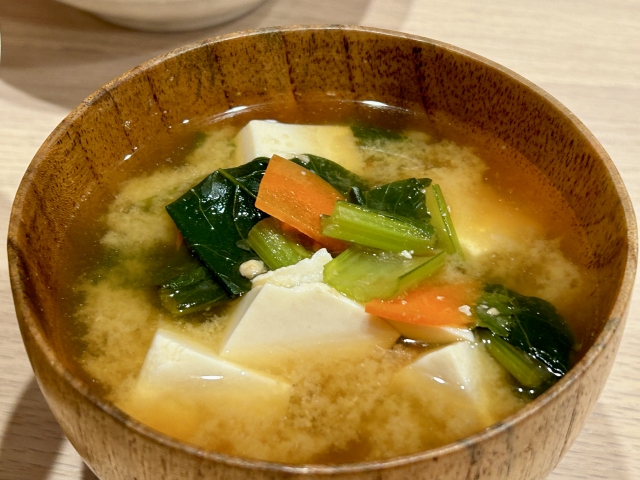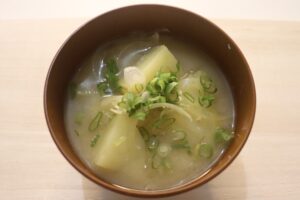What is Miso soup??
Miso soup is a traditional Japanese soup made by dissolving miso in a dashi broth, with ingredients like vegetables, tofu, and seaweed. It is a staple in Japanese households and an essential part of Japanese cuisine.

History of Miso Soup
Miso soup dates back to the Heian period and was initially consumed by the aristocracy. By the Edo period, it became common in everyday households, evolving into a staple of the Japanese diet.
Characteristics of Miso Soup
- Dashi: Typically made from kombu (kelp) and katsuobushi (bonito flakes), providing a rich umami flavor.
- Ingredients: Commonly includes tofu, wakame, green onions, and various vegetables, depending on the season and region.
- Types of Miso: White miso, red miso, and blended miso are the three main types, each offering a distinct flavor profile.
How to Make Miso Soup
1.Prepare the Dashi: Soak kombu in water and gently heat to extract its flavor, then add katsuobushi and strain the broth.
2.Prepare the Ingredients: Dice tofu, and prepare wakame and green onions. Chop vegetables if using them.
3.Dissolve the Miso: Add the ingredients to the dashi, then turn off the heat and dissolve the miso carefully to preserve its flavor.
4.Final Touch: Serve the soup in bowls and garnish with green onions or other preferred toppings.

Nutritional Value and Health Aspects
Miso soup is rich in plant-based protein and probiotics from fermented soybeans. Depending on the ingredients, it can also provide vitamins and minerals. However, due to its high sodium content, it should be consumed in moderation.
Cultural Significance of Miso Soup
Miso soup symbolizes the essence of Japanese home cooking, often associated with family health and well-being. Each region has its unique way of preparing miso soup, reflecting local tastes and customs. It is a versatile dish enjoyed throughout the year, adapting to seasonal ingredients.

Comments